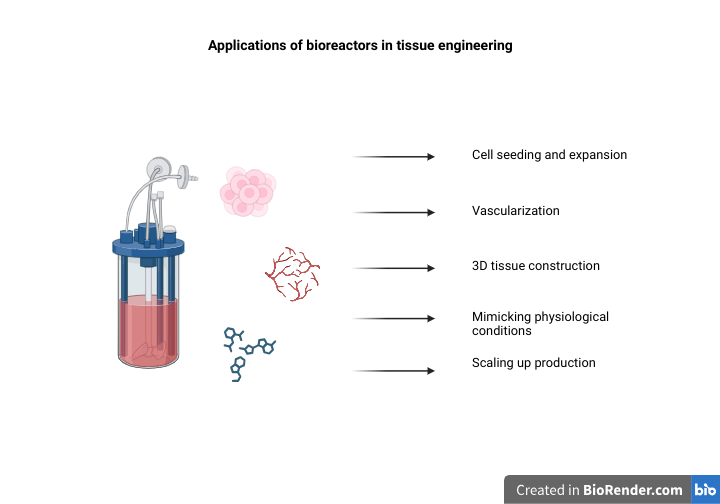
Applications of bioreactors in tissue engineering
Bioreactors play a crucial role in tissue engineering by providing a controlled and dynamic environment for the cultivation and maturation of engineered tissues.
Here are some crucial applications of bioreactors in tissue engineering:
Cell expansion and seeding
Bioreactors are used to expand and proliferate cells to obtain a sufficient cell population for tissue engineering. This is particularly important when using primary cells or stem cells. Bioreactors can ensure uniform cell distribution on scaffolds.
3D tissue construction
Bioreactors enable the layer-by-layer assembly of 3D tissue constructs. They allow for the precise placement of cells, growth factors, and biomaterials to create complex tissue structures that mimic native tissues.
Vascularization
Generating functional blood vessel networks within engineered tissues is critical for ensuring proper nutrient and oxygen supply. Bioreactors can promote the development of vascular networks by providing controlled flow and shear stress.
Controlled oxygen and nutrient supply
Bioreactors maintain oxygen and nutrient gradients within tissue constructs, which is essential for cell viability and tissue development. They can also remove waste products efficiently. Bioreactors can apply mechanical forces, such as compression, tension, and shear, to mimic physiological conditions.
Mimicking physiological conditions
Bioreactors allow researchers to replicate the physiological conditions of specific tissues or organs, including temperature, pH, and mechanical properties. This is critical for tissue maturation and functionality.
Scaling up production
Bioreactors are employed to scale up tissue production for clinical applications. They ensure that engineered tissues meet the necessary quality and quantity standards for transplantation.
Bioreactors are versatile tools in tissue engineering that enable the creation of complex and functional tissues and organs.
References
1. Plunkett N, O’Brien FJ. Bioreactors in tissue engineering. Technol Health Care. 2011;19(1):55-69. doi: 10.3233/THC-2011-0605. PMID: 21248413.
2. Hansmann J, Groeber F, Kahlig A, Kleinhans C, Walles H. Bioreactors in tissue engineering – principles, applications and commercial constraints. Biotechnol J. 2013 Mar;8(3):298-307. doi: 10.1002/biot.201200162. Epub 2012 Nov 19. PMID: 23161827.
3. Selden C, Fuller B. Role of Bioreactor Technology in Tissue Engineering for Clinical Use and Therapeutic Target Design. Bioengineering (Basel). 2018 Apr 24;5(2):32. doi: 10.3390/bioengineering5020032. PMID: 29695077; PMCID: PMC6027481.
4. Stephenson M, Grayson W. Recent advances in bioreactors for cell-based therapies. F1000Res. 2018 Apr 30;7:F1000 Faculty Rev-517. doi: 10.12688/f1000research.12533.1. PMID: 29770207; PMCID: PMC5931275.



